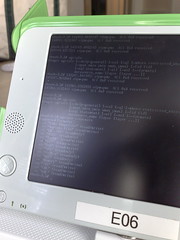From an email I’ve been sending around:
As part of an effort to seek out Open Source Geo people in the Boston area, I’m canvassing the local community for interest in a regular open source geospatial interest group meeting.
For those of you who don’t know, OSGeo is a non-profit organization which is seeking to fulfill an umbrella organizational role for a number of Open Source Geospatial software projects, including projects like GeoServer and OpenLayers. It is currently entering its third year of operation, and has a number of projects undergoing incubation currently to become "OSGeo projects", including everything from uDig and QGIS to GRASS to GeoServer.

The goal of having regular meetings would be:
- Create Networking oppourtunities: allow users of open source geo software to meet with creators of open source geo software where possible.
- Share knowledge: meetings could have a presentation from a particular person on everything from how to use a certain tool, to types of data available, to anything else.
- "Chill out": spend social time with other like-minded individuals — either users of open source geosoftware, or just people interested in learning more about it.
Essentially, I personally envision this as being very similar to a Linux Users Group meeting: go someplace, here a 45 minute presentation with 15 minutes of questions on a particular related topic, then head out, get beers someplace, and relax.
If such a thing were to take place in the Bostonish area, would anyone in the area be interested in attending? Anything in particular that strikes your interest?
Looking forward to hearing from anyone interested in creating a local group of OS Geosoftware users…

